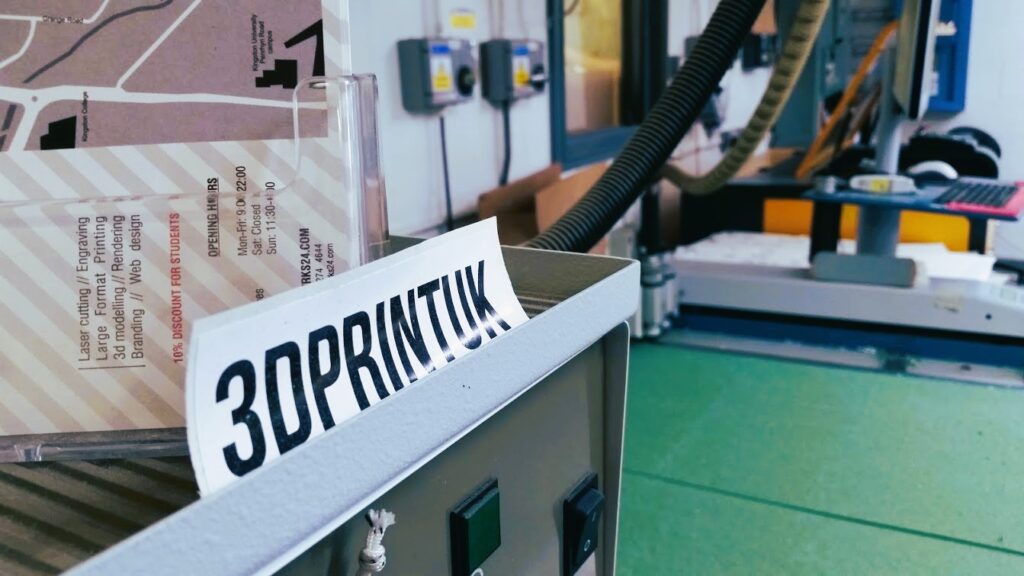Q&A: From graph paper to graphic design: Engineering continues to evolve

Advanced printing technology. Image (C) Tim Sandle
Before 1957, the only way to design a building, car, airplane or any new product was to draft a sketch on graph paper. Then came the commercial introduction of computer-aided design (CAD) software, followed by more and more complicated programs and systems, and eventually, today’s robust suite of software that can create anything from a 3D model to an interactive, virtual-reality platform in which engineers can collaborate and build the next generation of just about anything.
To explore what is happening now in the industry and what is possible in the near future, Digital Journal connected with Dale Ford, President and CEO of Hawk Ridge Systems, one of the industry’s leading providers of digital engineering software and hardware.
Digital Journal: Can you give some background about Hawk Ridge Systems and what you do?
Dale Ford: As a solutions provider for design and manufacturing companies, we provide software and hardware services and products that enable them to design, innovate, and manufacture their products. More specifically, we sell 3D design software, SolidWorks and CATIA, as well as the ecosystem of software to support the design and manufacturing of products, from data management, product lifecycle management, analysis and simulation, and more. We also sell an industrial and production-grade line of 3D printers and scanners to support rapid prototyping and end-use additive manufactured components. These systems are highly complex and cutting edge, so we also provide services, training, and technical support to enable their use by helping configure and deploy them.
DJ: Before you started Hawk Ridge Systems, you were an engineer with Rand. How did that develop?
Ford: Coming out of school in my first job designing products, I found I had a passion for the emerging technology in CAD and Analysis. Those were the days when PTC Pro Engineer really dominated the industry. As an application engineer at Rand, I was able to dig in and focus on these cutting-edge products and be a part of the democratization of the tools.
DJ: What were some of the first technologies you worked with?
Ford: Like most engineers of the 80’s and 90’s my first experience was with AutoCAD, which is predominantly a 2D CAD system for producing detailed drawings for manufacture. Autodesk (maker of AutoCAD) and PTC both developed lower cost 3D Design tools over the years, the real gamechanger was in 1998 when SolidWorks was introduced as a MS Windows-native parametric modeler. This was a watershed moment and Hawk Ridge Systems never looked back, growing alongside what has emerged as the industry-leading solution in design and manufacturing.
DJ: How has the technology changed over the years or decades?
Ford: Where to begin? Going from a drafting tool used to make manufacture drawings, design tools have enabled designers and engineers to shift the 3D model to the center of the business, in what we call model-based definition. Now, the data stored in the model informs every aspect of our customer’s business: the material, size, shape, how it will perform and last, as well as renderings for marketing materials and installation instructions. Customers are leveraging this data to improve quality, reduce costs, and boost performance.
DJ: What are some of the industries you serve and how do they use your technology?
Ford: It may sound cliche, but we truly serve every commercial and industrial vertical. Whether it’s the actual product they’re designing, or the industrial tooling used to manufacture those products, Dassault Systemes SolidWorks and CATIA products are being used. And when it comes to rapid prototyping, industrial tooling, and even production with plastic, our portfolio of HP, Markforged, and Formlabs 3D Printers are being leveraged as well.
DJ: You have an education component. Tell us about that.
Ford: Absolutely, the products we sell, though intuitive and robust, are still engineering tools – And we ensure our customers get maximum value from their investment by providing several ways to learn how to use them. From live instructor-led workshops to self-paced eLearning and custom-tailored training, we can provide the format that works best for our customers. Our training content focuses on more than just the “picks and clicks,” but how to apply the technology with industry-based best practices and real-world scenarios. We provide the training directly through certified instructors at Hawk Ridge Systems, and through our special partnership with SolidProfessor – The #1 resource for design and manufacturing eLearning.
DJ: What are some new trends in the industry you feel will make the biggest impact over the next few years?
Ford: The biggest thing happening now is the move to cloud-enabled software. Prior to cloud based workstation capability, CAD systems have been bound to very expensive engineering grade desktops that required specialized graphics processing, and huge amounts of memory – And those systems quickly become obsolesced as the CAD developers leverage the new power of updated hardware. Now, with the emergence of secure and powerful virtual environments, these products can be run anywhere and through any browser, with unlimited upgrading and resources available on demand. In a global and remote world, teams can easily collaborate and manage their products easier than ever before with the latest technology.
DJ: What will CAD be able to do in 10 years that it can’t do right now?
Ford: This is the question that Dassault Systemes is seeking to answer with its 3D Experience platform. This is essentially the business operating system of the future for manufacturing – Built from the ground up purposely with the 3D model as the center of the platform, it’s enabling more departments to be connected to a single source of truth starting with ideation all the way to product support into the field through digital twins. Our customer’s finance, marketing, retail, quality, field service teams and more will be directly tapped into the platform – leveraging data, boosting time to market, increasing quality, and reducing costs.
Q&A: From graph paper to graphic design: Engineering continues to evolve
#graph #paper #graphic #design #Engineering #continues #evolve





